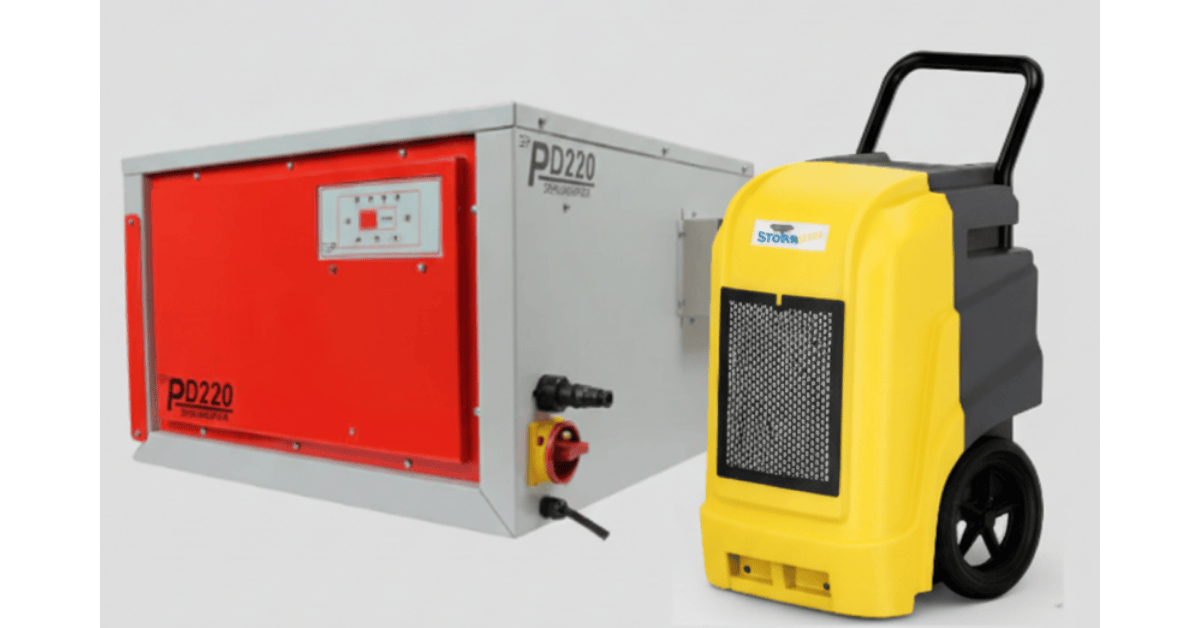 Ask any experienced grower and they’ll tell you the most important factor in growing top-quality cannabis flowers is climate control. Made up of temperature and humidity, climate is the single greatest variable affecting density, potency, and overall cannabis yields. In the past, we’ve discussed the higher-humidity needs of young plants and clones. But as the saying goes, they don’t stay young forever. Once a plant’s roots have developed, it’s time to transition to the next three plant cycles: Vegetative, Flowering, and Late Flowering. Each of these stages has an incrementally lower relative humidity from around 70% during the first few weeks down to around 40% or lower during late flowering. This gradual reduction in humidity is essential to ensure proper uptake of nutrients, mold and fungus prevention, and increased development of resin on your colas. For a quick recap on ideal climate levels by stage, see the reference chart below.
Ask any experienced grower and they’ll tell you the most important factor in growing top-quality cannabis flowers is climate control. Made up of temperature and humidity, climate is the single greatest variable affecting density, potency, and overall cannabis yields. In the past, we’ve discussed the higher-humidity needs of young plants and clones. But as the saying goes, they don’t stay young forever. Once a plant’s roots have developed, it’s time to transition to the next three plant cycles: Vegetative, Flowering, and Late Flowering. Each of these stages has an incrementally lower relative humidity from around 70% during the first few weeks down to around 40% or lower during late flowering. This gradual reduction in humidity is essential to ensure proper uptake of nutrients, mold and fungus prevention, and increased development of resin on your colas. For a quick recap on ideal climate levels by stage, see the reference chart below.
| Stage of Growth | Humidity | Lights-On Temperature |
| Seedling Stage | 65-70% | 68-77 F° |
| Vegetative | 40-70%* | 71-82 F° |
| Flowering | 40-50% | 68-79 F° |
| Late Flowering | 30-40% | 64-75 F° |
*Reduced by 5% weekly until proper levels are reached.
What Is Humidity?
When we talk about humidity, we’re actually talking about “Relative Humidity” (RH). This is a measurement of the amount of water vapor in the air compared to how much water vapor the air could hold at a specific temperature before it turns into moisture. The most important thing to know is that warmer air can hold more water vapor than colder air. This is why we see fog form when the temperature drops: the water vapor levels remain the same, but a lower temperature allows for less water vapor suspension so it then becomes fog. 0% RH would be arid desert-like conditions while 100% relative humidity would essentially be a cloud.
Raising the temperature, while keeping the same water vapor levels, lowers relative humidity since RH is a measure of humidity relative to temperature. Conversely, lowering temps increase RH. The other way to alter RH is to increase or decrease the amount of water vapor in the air while keeping the temperature constant. The important thing to remember is that raising or lowering temperature has an opposite reaction on RH (temp up, RH down | temp down, RH up) while changing vapor levels at a constant temperature has a direct change (vapor down, RH down, etc.).
Controlling Humidity
Assuming your temperature is under control with proper ventilation and cooling, let’s look at what we can do to manage humidity levels to create a perfect atmosphere for thriving cannabis crops. To understand how to control humidity, we must first understand where it’s coming from. External air that’s vented in will have its own relative humidity levels. This will vary by region, season, and even by day. Inside the growing space, plants “perspire” approximately 97% of the water they take up through the roots, releasing it into the air. And finally, any standing water in your grow room will evaporate into the air adding to water vapor levels.
The reason we mention ‘temperatures being under control’ out of the gate when talking about controlling humidity is that it’s much more efficient to remove water vapor than to increase temperatures. This is especially true when considering how difficult it can already be to keep temperatures in the desired range when dealing with dozens of 1,000-watt lights and the heat they give off. So, the best option for reducing RH is to reduce water vapor directly. And for that, you need a dehumidifier.
Why You Need a Commercial Dehumidifier
Many first-time growers know they need to manage their humidity levels but make the mistake of trying to be thrifty on this crucial piece of equipment. So instead of buying the right tool for the job, they buy a dehumidifier designed for home use which, by design, uses a lot of energy compared to the work it’s doing and just isn’t built to handle the workload. For any serious growing ventures, get a commercial-grade dehumidifier. You can choose to ignore this advice and see the energy bills for yourself or you can skip a few pages ahead and do it right the first time with a commercial dehumidifier. The entry cost is certainly higher, but the end result is much, much better.
Wish as you may, humidity levels won’t magically reduce themselves. This is the blessing and curse of indoor growing: The growing conditions can always be perfect every time… if you make them perfect. We will probably begin to sound like a broken record by saying this but, in a competitive legal cannabis marketplace, the most efficient, consistent and cost-effective grower has the advantage. Additionally, to ensure consistency, always make sure you’ve built redundancy into your grow room design. There’s nothing worse than the most important piece of equipment breaking down at the worst possible time.
And if Murphy has taught us anything, it will.






